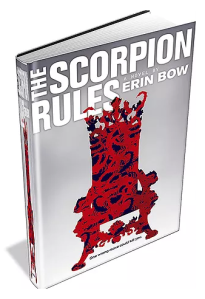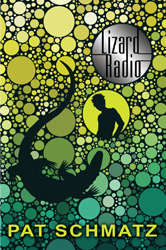Title: Resistance
Series: Divided Elements #1
Author: Mikhaeyla Kopievsky
Genre: Dystopian
Trigger Warnings: Death, blood, needles/injections (severe), medical content, domestic violence (mentions), sexual content (mentions), injury, animal death (mentions), alcohol use (a lot), self-harm (brief)
Back Cover:
From the moment you are born, you are conditioned to know this truth: Unorthodoxy is wrong action, Heterodoxy is wrong thought. One will lead to your Detention. The other to your Execution.
Once known as Paris, the walled city-state of Otpor is enjoying a new Golden Age.
The horrors of the Singularity and Emancipation forgotten, citizens now revel in a veritable utopia of ubiquitous drugs, alcohol, and entertainment, washed down with full employment, universal healthcare, and affordable housing. All made possible by the Orthodoxy – a new world order where everything is engineered to maximum efficiency, including identities.
From an early age, citizens are aligned and conditioned to one of four neuro-social classes named after the cardinal elements of old: single-minded Fire to enforce, creative Air to entertain, technical Water to engineer, and base Earth to labour.
All four Elements exist in complete equality, fraternity, and liberty. But, not everyone is satisfied with the status quo.
Two generations after the Execution of Kane 148 and Otpor’s return to Orthodoxy, the Resistor’s legacy still lingers. Forbidden murals are appearing on crumbling concrete walls to threaten the city’s structured harmony – calling citizens to action. Calling for Resistance.
When Kane’s former protégé, Anaiya 234, is selected for a high-risk mission, Otpor is given the chance it needs to eliminate the Heterodoxy and Anaiya the opportunity she craves to erase a shameful past. But the mission demands an impossible sacrifice – her identity.
Subjected to a radical new procedure, Anaiya’s identity is realigned, allowing her to go deep undercover in search of the growing rebellion. But as the risk of violence escalates and every decision is fraught with betrayal, Anaiya’s fractured identity threatens to unravel not only her mission, but her mind.
Review:
I have read a lot of YA dystopian. This is largely because it was the primary YA genre during my prime YA reading years. If I’d read it back then, or even when it first released in 2017, I probably would have considered it a fine but not particularly noteworthy example of the genre. (Although it isn’t technically YA, it has a very YA feel, and I probably would have categorized it as such.) However, reading it in 2023 – with expanded adult reading tastes, an extra decade of reading and reviewing (and life) experience, and a much deeper understanding of books in general – makes it an absolutely wild experience.
There are some really great ideas and unique takes on dystopian tropes in this story. As much as I generally dislike the post-Hunger Games trend of dystopias sorting society into groups, this world’s idea of testing children’s aptitudes and then using neural conditioning/scifi tech to fully align their brains to particular elemental traits, making their elemental alignment basically hard-wired into their brains, was a unique take. I enjoyed the reconditioning element, where Anaiya got to experience emotions for the first time and all the complexities that emotions come with, especially when you’re not used to dealing with them. I found it both fascinating and relatable, and if the story dropped most of the attempted-dystopian elements and put the focus on Anaiya’s internal journey, I think I would have enjoyed it a lot more. The “are we the baddies?” idea is also a unique take on dystopian stories – instead of rising up from the oppressed under-class, the protagonist starts out as an agent of the dystopian government and slowly realizes that maybe the government isn’t as good as she thought.
However, despite the actually good ideas Resistance has, it has three major flaws that undermine it both as a dystopian story and as a reading experience.
First, it doesn’t convince me that this is a dystopian world. Characters talk about how terrible everything is, but not only do we not see that in the narrative, they don’t even give examples. The only actual described problem is police brutality (or, in this case, Fire element brutality) – it’s the only thing actually shown on-page and the only specific issue anyone complains about. Dystopian societies probably have police brutality, sure, but it’s not exclusive to dystopias. There is a curfew and the whole idea of conditioning people to elements in the first place, but these definitely more dystopian happenings are mentioned in passing as world-building. Nobody seems to actually have a problem with those.
Second, which ties into both the previous and next points, it never shows anyone in power in this society. The closest the story ever gets to someone “in charge” is the Fire element commander who gives Anaiya her initial re-alignment assignment. A dystopian society just doesn’t feel very dystopian without someone or a small group of someones at the top doing the oppressing, and this book never indicates that there’s anyone actually in power at all. It may be realistic that ordinary people don’t actually interact with those in power, but they should at least know who their king/”president”/commander/dictator/etc. is. Not only does it reduce the world’s dystopia factor, lacking an antagonist, even a symbolic one, makes fighting the system feel unrealistic.
Which brings me to the third problem: it fails to convince me that the resistance is a threat, or even that it exists in a meaningful way. Everyone is getting bent out of shape about the “Heterodoxy” and the brewing rebellion and how terrible this is going to be. But for the vast majority of the book, the entire rebellion consists of murals that say “Resistance.” That’s it. It does escalate a little towards the end, but not by much. The entire alleged rebellion against the entire alleged dystopia for most of the book is unauthorized paintings with provocative words. And, minor spoiler time, Anaiya’s infiltration finds there’s only three to five people behind the whole thing. The response to the threat of this Heterodoxy seems wildly out of proportion with the scope of the damage that five people doing unauthorized art can actually do.
I think I found this book so disappointing because there are some really good ideas. It does some truly fascinating things with standard dystopian tropes, and Anaiya’s personal arc is, quite honestly, superb. (That character resolution? Spectacular. Loved it.) There are a lot of interesting ideas in the world that had real potential. But then the plot itself fell so flat. I didn’t even hate the love triangle that much because none of it felt like it actually mattered. There was a fair amount of violence in the book, but it never felt like it had real stakes.
I did finish it. I started writing this review as a DNF, but at that point I only had about fifty pages left, so I went ahead and finished it to see if my criticisms bore out through the whole book. And in the end, I’m glad I did, because even though one of the twists felt entire out-of-the-blue and I guessed the other, the wonderfully satisfying resolution to Anaiya’s personal arc was worth it. Resistance isn’t a bad book, per se. I think I’m just disappointed that so many good ideas got a lackluster, stakes-less plot that didn’t do them justice.
The Divided Elements series:
- Resistance
- Rebellion
- Revolution



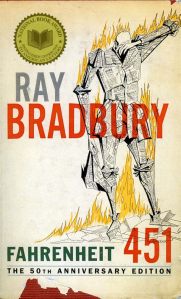
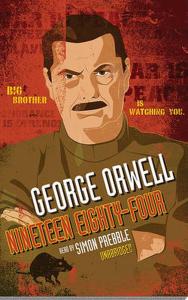
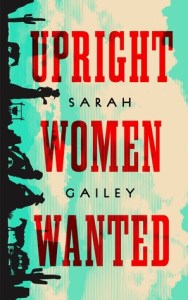
 Title: V for Vendetta
Title: V for Vendetta Title: The Swan Riders
Title: The Swan Riders